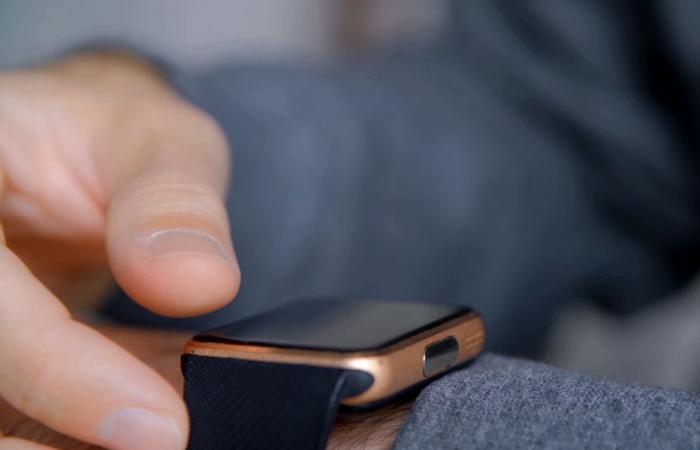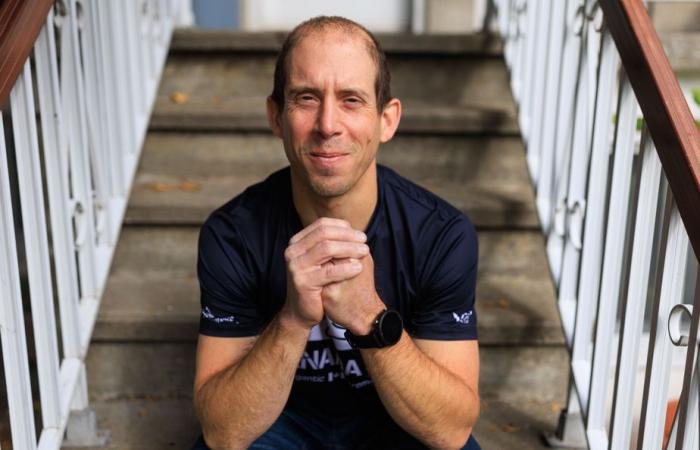Stress data that causes anxiety. Sleep data that causes insomnia. Smart watches, ever more sophisticated, may ironically create problems they claim to solve.
Posted at 7:00 a.m.
Every morning, as soon as David Pacciolla wakes up, his smart watch informs him that he had a restless sleep and is lacking REM sleep.
“Sleep quality scores, at first glance, are interesting. But for someone like me who has difficulty sleeping, it created more stress for me to try to achieve a good score,” confides David Pacciolla.
The 44-year-old got his first smartwatch about ten years ago to train for Ironman, long-distance triathlons.
Smartwatches are growing in popularity globally. Around 454 million people own such a device, according to estimates from Statista Market Insights. This is 10 times more than in 2017.
The device attached to his wrist is Mr. Pacciolla’s training ally. It allows him to track his heart rate, running cadence and speed. Every day, he spends around fifteen minutes analyzing his data. “It allows me to see if I’m progressing,” he says.
His watch provides him with valuable information about his physical state. By analyzing indicators such as heart rate variability, he can quickly identify the first signs of fatigue and adapt his training accordingly. “I am convinced that it allowed me to avoid weeks of overtraining. »
PHOTO HUGO-SÉBASTIEN AUBERT, THE PRESS
David Pacciolla
Apart from training sessions, he also receives numerous other information provided by the watch, in particular that related to sleep. “I fell into a spiral of constantly trying to get the best sleep score possible. »
The quest for perfect sleep
David Pacciolla’s situation is similar to what the Dr Milan Nigam, neurologist and somnologist at Sacré-Cœur Hospital in Montreal, observes in the field.
We see people who didn’t even have insomnia, but who develop it, because they use their smart watch to track their physical activities and discover through the tape all the statistics about their sleep.
The Dr Milan Nigam, neurologist and somnologist at Sacré-Cœur Hospital in Montreal
Being overly conscious of your sleep can lead to performance anxiety – or a quest for the perfect sleep – known as orthosomnia, he explains.
The data must be interpreted with caution, emphasizes the specialist. As a general rule, watches are fairly reliable in indicating when you fall asleep and wake up, but they are less reliable in determining the stage of sleep (light, deep and REM) you are in.
“And even if the data were perfectly reliable, the human body is going to have different amounts of different stages of sleep every night. These are not necessarily things that we should try to modulate,” he says.
Read our article “When the quest for perfect sleep keeps you up”
A watch that “makes you anxious”
The data is numerous and can “make you anxious”, also observes the Dr Mathieu Pelletier, family doctor at the University Family Medicine Group (GMF-U) of Northern Lanaudière.
Some features may also have undesirable effects. Smartwatches, like those from the Garmin brand, boast of monitoring your stress levels 24 hours a day, 7 days a week.
“It can be positive and allow patients to question their condition. But it can also increase anxiety and panic symptoms in someone who has an anxiety disorder and sees the numbers on the watch changing,” says psychiatry resident at the University of Montreal Laurent Enkrief.
Avoiding strokes
The advantages of the watch are, however, more marked in certain medical specialties, such as cardiology.
“We have more and more patients who come to the emergency room because they notice an abnormal heart rhythm on their watch. It helps us enormously,” says the Dr Peter Guerra, cardiologist, electrophysiologist and head of the department of specialized medicine at the Montreal Heart Institute (ICM).
Watches that measure heart rate can also help detect various medical problems, such as atrial fibrillation. This disorder causes an irregular and rapid heartbeat, which can lead to stroke.
If the fibrillation occurs intermittently, it may not be detected when the patient comes for their regular hospital appointments. If we diagnose these cases earlier with a watch, we can give treatment to the patient more quickly and avoid strokes.
The Dr Peter Guerra, head of the department of specialized medicine at the Montreal Heart Institute
Although the watches are not as good as the electrocardiogram obtained in the hospital, “it is sufficient to see if the heart rhythm is normal or abnormal”, indicates the Dr Guerra.
He even recommends that his patients who have arrhythmia get a watch or other device that can track heart rate. “It allows us to better document the number of episodes they do,” he says.
Detect falls
A growing number of elderly people are also wearing these watches for their fall detection function, observes the Dre Joëlle Bertrand-Bovet, family doctor at Honoré-Mercier hospital in Saint-Hyacinthe.
“We regularly see people arriving at the hospital, in the emergency room, because they fell and it was their smart watch that called for help,” she says.
The Apple Watch, for example, automatically calls emergency services if it detects no movement for a minute after a fall. It also sends a message to emergency contacts letting them know the person’s location.
What about smart rings?
Just like smartwatches, smart rings typically offer a wide range of features, such as fitness tracking, heart rate monitoring, sleep measurements, stress measurements, and step counts. But since most smart rings don’t have a screen, information is often transmitted to the cell phone by an app. However, the impact of smart watches and smart rings on well-being and health remains similar.







